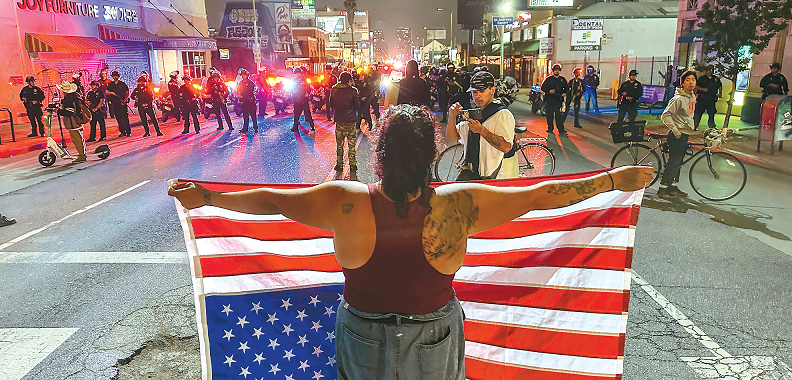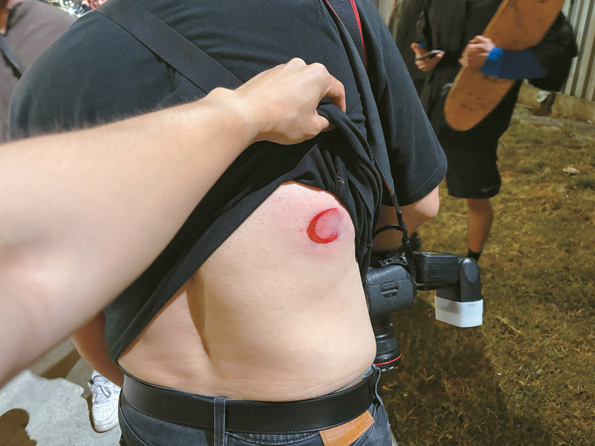Around 8:00 p.m. on June 11, approximately 300 protesters began marching west along Wilshire Boulevard from downtown Los Angeles. The group had originally intended to move toward downtown, but after a curfew was imposed and police blocked entry, the crowd redirected toward Koreatown.

Protesters waved U.S. and Mexican flags and shouted slogans, while others followed on motorcycles, revving their engines. Cars in support honked as they joined the march.
By 8:50 p.m., the demonstrators reached the intersection of Wilshire Boulevard and Vermont Avenue. At that point, LAPD patrol cars began trailing the marchers without blocking their movement—prompting suspicions that officers may have intentionally allowed the group to enter Koreatown.
The march continued to the area of Wilshire and Western Avenue, where police formed the first containment line. Some protesters dispersed northward in response.
Businesses directly along the route were impacted. At Jjamppong Jijon, manager Shin said, “We locked the doors and only let people out individually, worried that customers might be affected. I felt uneasy because things could escalate at any moment.”
Police later formed a final containment line at the intersection of Western Avenue and Beverly Boulevard, pushing the crowd into a tighter space. Officers shouted “Move, move” as rubber bullets were fired in the area.
The affected zone includes a dense commercial strip of Korean American restaurants and markets, and many local business owners reacted quickly.
Eunice Chun, manager of Pho 2000, said, “We had about six tables of customers when we got a warning around 10 p.m. about the danger, so we pulled the shutters down and stayed inside with the customers.” She added, “It reminded me of the 1992 LA riots, and I was worried the situation could spiral. If protests happen again today (June 12), we plan to close early.”
A couple surnamed Yu, who have operated a rice cake shop for 40 years, said, “As people who experienced the 4/29 riots firsthand, this protest brought back terrifying memories.” They stayed inside after police instructed them not to go out. “The next morning, trash was scattered in front of our store. We’re mostly afraid of looting or arson.”
Andrew Noel, a worker at Paris Baguette, said the store normally closes at 10 p.m. but shut down earlier that night due to the protest. A staffer at a Korean market, identified only as Kim, said, “In case more protests happen tonight (June 12), we moved all the expensive liquor and cigarettes into storage to prevent looting.”
Despite lasting nearly three hours, the protest did not cause major property damage. Jeff Lee, secretary general of the Korean American Federation of Los Angeles, said, “Based on reports and our internal investigation, aside from some graffiti, there was no significant damage.”
The federation issued a statement urging people to refrain from unnecessary social media activity or participating in protest-related gatherings.
The Korean American Chamber of Commerce of Los Angeles is also working to minimize damage to local businesses and share accurate updates. President Dongwan Jung said, “We’ve been updating member businesses on the immigration raids and protests. We’ve also activated our LAPD contact network to reassure Korean Americans.”

Meanwhile, at approximately 10:30 p.m., The Korea Daily reporter Sangjin Kim was struck in the back by a rubber bullet fired by LAPD while covering the protest near Western Avenue and Beverly Boulevard.
BY HANKIL KANG [kang.hankil@koreadaily.com]




